Author: Pix
Translated by: Tim, PANews
Every cycle has its moments of flaunting wealth.
What is flaunted is not just on-chain data or wallet screenshots, but more importantly, the display of wealth in the real world.
Some people were still unknown a year ago but now walk into watch shops, spending cash to buy luxury watches and sharing wrist photos online.

At this moment, it seems trivial, yet it marks an important shift in market psychology.
Let's analyze this phenomenon from the most basic level.
Why watches?
The reasoning is simple; Rolex is a Veblen good. (Note from PANews: Veblen goods refer to luxury goods where higher prices increase demand, seemingly contradicting the law of demand.)
The more expensive the goods, the more people want to buy them.
They do not showcase value through functionality but through price.
People buy goods not for practicality but for the status they represent.
Once the nouveau riche become wealthy, the first thing they want is for the whole world to know about their wealth.
They do not buy land or government bonds.
They purchase symbols of wealth, watches, luxury cars, and sometimes NFTs.
But things are not as simple as they initially seem.
Lagging indicator
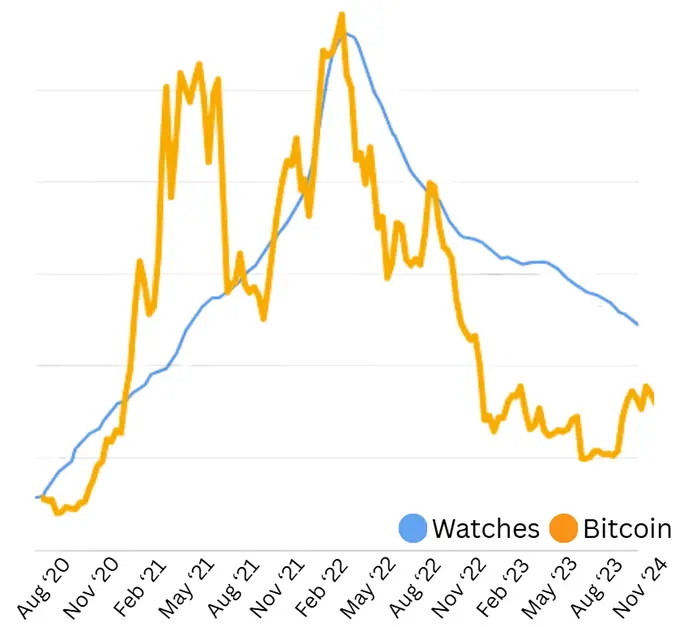
Watch index from 2020 to 2024 compared to Bitcoin price
In 2021, most people believed that watch prices rose in sync with cryptocurrencies.
From a timing perspective, the watch market did not prosper when Bitcoin first set its historical high.
When the prices of NFTs are as expensive as houses, the watch market becomes hot again.
That round of Rolex price movement was not the beginning of a crypto bull market but a signal of a market top.
The usefulness of this phenomenon lies in the lagging nature of the luxury goods market.
In the data chart, we can see that the trends of the two do not differ much but are just right.
The watch index lagged behind cryptocurrencies when it was rising, then peaked slightly later, and ultimately crashed almost in sync.
The price of Rolex watches plummeted nearly 30% within a year after the collapse of the crypto market.
Not because demand has disappeared, but because the core demand driving prices (status symbol) has diminished.
This makes watches an atypical signal.
They cannot reflect the fundamentals, only the market sentiment.
Moreover, it is clearer and more straightforward than most existing indicators.
An alternative indicator
In traditional finance, there are volatility indices (like the VIX index).
There are funding rates in the futures market.
But both of these are indirect indicators.
Luxury goods are different; they reflect not only the behavior of investors but also their emotions.
They think they are very wealthy and yearn for the world's attention.
This is not a good phenomenon; when you see watch premiums at twice the retail price, or someone flaunting their custom Rolex NFT, it often indicates the peak of a crypto bull market.
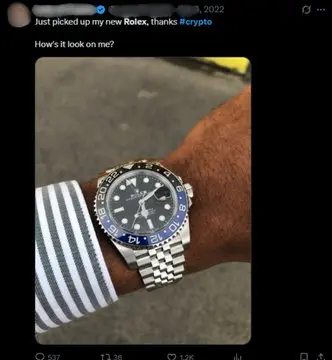
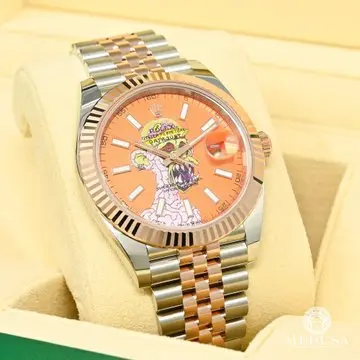
Since wealth has already been created, the next step is naturally to squander it.
So what stage are we in now?
At what stage of the cycle are we?
We are once again approaching historical highs, with Bitcoin rising and Ethereum also on the rise.
Even old mainstream coins like ADA and XRP have risen 50% in the past month.
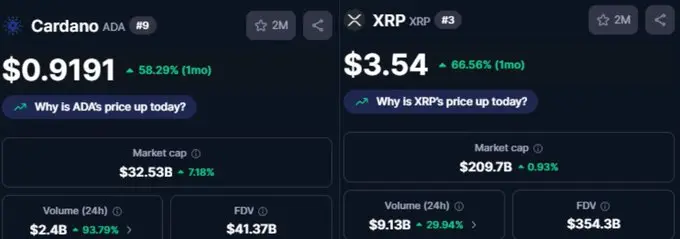
However, the price trend of Rolex is calm. Prices are stable, and some models are even unsold. Dealers do not report shortages, and the premiums are not significant.
At first glance, it seems bearish, but in reality, it may be the opposite.
The reality is that the profits accumulated in this cycle have not yet been widely realized.
The recent meme coin craze has only created a small number of millionaires.
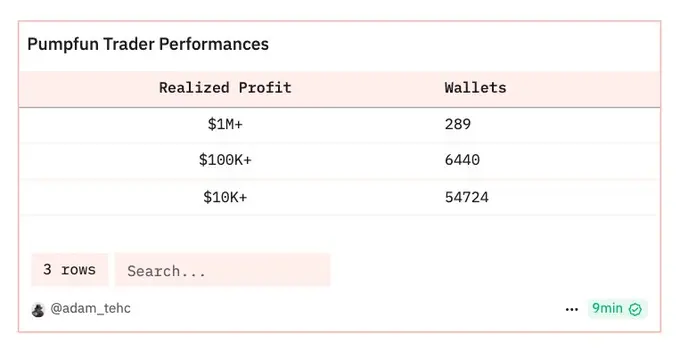
In this hype-filled crypto market, this data is not significant.
However, now you will find that the price of Rolex is rising again.
Posts about Rolex have increased on crypto Twitter, and discussions have become more frequent, but they are far from the heat of 2021.
Also remember, the last time the shipment volume of luxury watches improved was only in the later stages of a bull market: not when Bitcoin first peaked, but after the second peak, because at that time everyone felt like a millionaire.
When everyone wants to be noticed, Rolex will become a choice.
History does not repeat itself, but it rhymes.
In the past few months, some changes have occurred, and the prices of Bitcoin and watches have begun to move in tandem.
The trends are not completely identical, but they are clear enough.
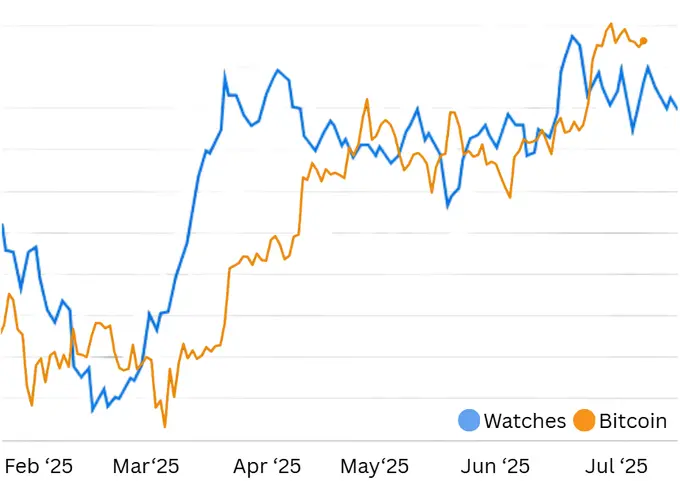
In 2021, cryptocurrencies rose first, followed by the NFT craze, and then the price surge of Rolex. The watch market has a certain lag and does not move in sync with the two.
Is the Rolex market now starting?
How to put it, actually, not really, this trend looks a bit different.
Luxury watches and Bitcoin almost started rising simultaneously, and since March, they have been almost in sync.
But if you enlarge the image, you will find differences.
Enlarged trend chart
Bitcoin is close to its historical high, but watches are not.
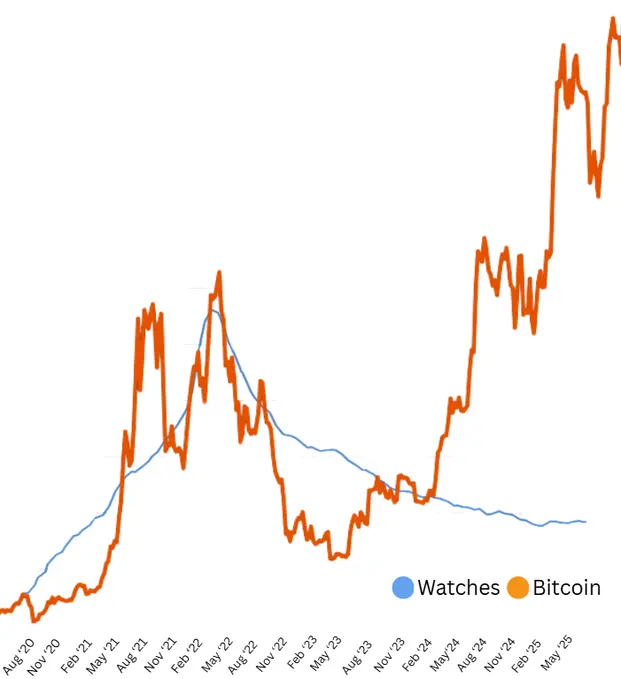
Most indicators are still far below their 2022 peaks, except for Rolex and Patek Philippe, and the overall watch market is down.
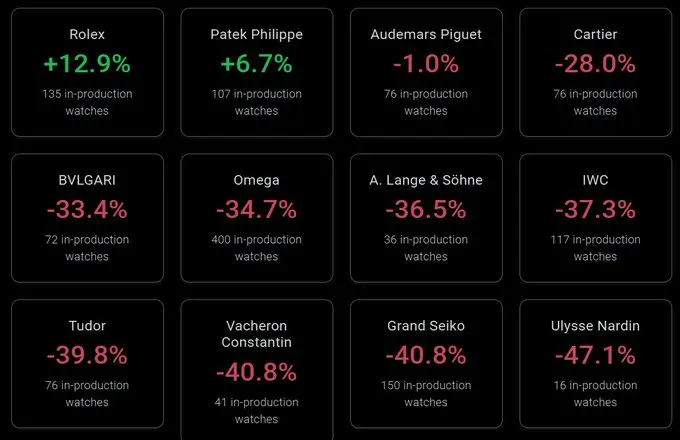
Cartier, Omega, and even Audemars Piguet have seen prices drop by 30-40% compared to retail prices.
This data is important because it indicates two things.
First, we have not yet entered the market excitement phase.
Secondly, most watches are still a poor investment.
The original intention of its design is not to retain value but to convey value sentiment.
Please note: The rise in watch prices does not mean we are at the market top, but it does indicate that we have entered the mid-phase of a bull market.
People tend to wait until the difficulties pass before they are willing to spend on symbolic consumption. This statement usually indicates a position in the middle of the bull market cycle, about two-thirds of the way through.
Wealth is accumulating, and confidence is returning. But real consumption has not yet begun.
When the moment of 'wealth-driven consumption' arrives, you will know even without looking at the chart indicators.



